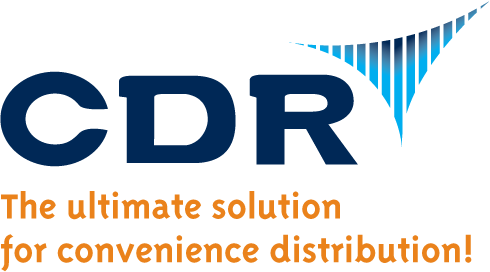In the fast-paced world of convenience distribution, efficient inventory management is the cornerstone of reducing waste and maximizing profitability. With a myriad of products and fluctuating demand, businesses face the challenge of maintaining optimal stock levels without overburdening their storage capacities or financial resources. By implementing effective inventory practices, businesses can streamline their operations, minimize stockouts, and reduce excess inventory. In this article, we’ll delve deeper into some of the best practices for inventory management and explore how they can lead to greater supply chain efficiency and sustainability.
Understanding the Importance of Inventory Management
Inventory management is the process of overseeing and controlling the ordering, storage, and use of products that a company will sell. It is a critical element of supply chain management, ensuring that a business has the right products in the right quantity for sale, at the right time. This precision not only helps in meeting customer demand but also in reducing costs associated with excess inventory, minimizing waste, and enhancing customer satisfaction. Effective inventory management can also improve cash flow by reducing the amount of capital tied up in unsold goods.
Moreover, efficient inventory management can mitigate risks associated with stockouts, which can lead to lost sales and damage to the brand’s reputation. On the other hand, overstocking can result in increased storage costs and potential waste if products become obsolete or expire. By maintaining a balanced inventory, businesses can optimize their resources, improve operational efficiency, and ultimately contribute to a more sustainable business model.
The Challenges of Inventory Management in Convenience Distribution
Convenience distribution involves a wide variety of products with varying demand patterns, from everyday essentials to seasonal items. Managing inventory for such a diverse range of items can be challenging, requiring businesses to be agile and responsive to changing market trends. Businesses must balance the need to have enough stock to meet customer demand with the risk of overstocking, which can lead to waste and increased holding costs. Moreover, the perishable nature of many convenience products adds another layer of complexity, as businesses must also consider shelf life and spoilage.
Additionally, the dynamic nature of consumer preferences and the introduction of new products can complicate inventory management. Businesses must constantly adapt their strategies to ensure they are stocking the right products while avoiding obsolescence. External factors such as economic shifts, supply chain disruptions, and competitive pressures also play a significant role in shaping inventory strategies. Addressing these challenges requires a comprehensive approach that combines data-driven insights with flexible inventory practices.

Best Practices for Inventory Management
Implementing effective inventory management practices can significantly reduce waste and improve supply chain efficiency. These practices are not only about reducing costs but also about enhancing customer satisfaction and adapting to market changes. Here are some best practices to consider:
1. Implement Just-In-Time Inventory
Just-In-Time (JIT) inventory is a strategy where products are ordered and received only as they are needed for production or sales. This minimizes the amount of inventory a company holds at any given time, reducing storage costs and waste. By aligning inventory levels closely with actual demand, businesses can operate more efficiently and reduce the risk of overstocking. JIT requires precise coordination with suppliers to ensure timely delivery, making strong supplier relationships crucial.
Furthermore, JIT inventory can enhance a company’s flexibility, allowing it to quickly respond to changes in consumer demand without the burden of excess stock. While JIT can lead to significant cost savings, it also requires robust systems for tracking inventory and demand to avoid potential pitfalls such as supply chain disruptions. Businesses need to weigh the benefits against the risks and implement contingency plans to manage unexpected changes in the supply chain.
2. Use Inventory Management Software
Investing in inventory management software can automate many of the processes involved in tracking and managing stock levels. These systems provide real-time data on inventory levels, helping businesses make informed decisions about ordering and stocking. Features like demand forecasting, reorder alerts, and analytics can significantly enhance supply chain efficiency. By leveraging technology, companies can reduce human errors and improve the accuracy of their inventory records.
Moreover, inventory management software can integrate with other business systems, providing a holistic view of operations and enabling better strategic planning. The ability to analyze trends and predict future demand allows businesses to optimize their inventory levels, reducing waste and improving profitability. As technology continues to evolve, incorporating machine learning and AI into inventory management systems can further enhance predictive capabilities and operational efficiency.
3. Conduct Regular Inventory Audits
Regular inventory audits are essential for maintaining accurate inventory records. These audits can help identify discrepancies between recorded and actual stock levels, allowing businesses to address issues like theft, spoilage, or administrative errors. By keeping accurate records, companies can better manage their inventory and reduce waste. Regular audits also provide insights into inventory turnover rates and highlight areas for improvement.
Additionally, audits can reveal patterns and trends in inventory management, enabling businesses to refine their practices and strategies over time. Implementing cycle counting, a method where a small subset of inventory is counted on a regular basis, can help maintain accuracy without the need for a full inventory count. By incorporating regular audits into their routine operations, businesses can proactively address issues and maintain optimal inventory levels.
4. Optimize Order Quantities
Determining the optimal order quantity is crucial for balancing supply and demand. Businesses should use techniques like Economic Order Quantity (EOQ) to calculate the most cost-effective quantity of stock to order. This helps minimize holding and ordering costs while ensuring there is enough stock to meet customer demand. By optimizing order quantities, businesses can reduce waste and improve cash flow, contributing to overall financial health.
Moreover, businesses should consider factors such as lead times, supplier reliability, and market trends when determining order quantities. Employing a dynamic approach that adjusts order quantities based on real-time data and forecasts can enhance flexibility and responsiveness. This proactive strategy allows businesses to anticipate changes in demand and adapt their inventory practices accordingly, ensuring they remain competitive in a rapidly changing market.

The Role of Technology in Inventory Management
Technology plays a vital role in modern inventory management practices. From automated systems that track stock levels to advanced analytics that predict demand patterns, technology provides the tools needed to optimize inventory practices and reduce waste. By harnessing the power of technology, businesses can gain a competitive edge and improve their overall operational efficiency.
Advanced Analytics and Demand Forecasting
Advanced analytics tools can analyze historical sales data to predict future demand trends. By understanding these trends, businesses can adjust their inventory levels accordingly, reducing the risk of overstocking or stockouts. Demand forecasting helps ensure that the right products are available at the right time, enhancing supply chain efficiency. By incorporating external data such as market trends and economic indicators, businesses can further refine their forecasts and make more informed decisions.
Furthermore, predictive analytics can identify potential disruptions in the supply chain and allow businesses to develop contingency plans. By leveraging big data and machine learning, companies can enhance their predictive capabilities, ensuring they are well-prepared to meet customer demand. This proactive approach not only reduces waste but also strengthens the resilience of the supply chain against unforeseen challenges.
RFID and Barcode Technology
Radio Frequency Identification (RFID) and barcode technology can streamline the process of tracking inventory. These technologies provide real-time information on stock levels and movements, reducing the likelihood of errors and improving accuracy. By using RFID and barcodes, businesses can automate inventory tracking and reduce manual labor costs. This automation leads to more efficient and accurate inventory management, allowing staff to focus on other critical areas of the business.
Moreover, RFID and barcode systems enhance inventory visibility, providing detailed insights into product movement and location. This increased transparency can improve coordination across different departments and facilitate more efficient replenishment processes. As these technologies continue to evolve, their integration with IoT devices can further enhance inventory management by providing real-time environmental data, such as temperature and humidity, ensuring optimal storage conditions.
Conclusion
In conclusion, effective inventory management is essential for reducing waste and improving supply chain efficiency in convenience distribution and other industries, including hospital pharmacies. By implementing best practices such as Just-In-Time inventory, using technology, and conducting regular audits, businesses can optimize their operations and ensure they meet customer demand without overstocking. These strategies not only enhance profitability but also contribute to a more sustainable business model by minimizing waste and conserving resources.
By focusing on these inventory management practices, companies can navigate the complexities of convenience distribution and hospital pharmacy supply chains with greater efficiency and success. Embracing innovation and technology, coupled with a commitment to continuous improvement, can help businesses remain competitive and resilient in an ever-evolving marketplace. As the landscape of commerce and healthcare continues to change, those who prioritize efficient inventory management will be better positioned to thrive and meet the needs of their customers and patients.
Contact CDR Software Today
Ready to streamline your convenience distribution operations with innovative, all-in-one software solutions? Contact CDR Software today to learn how our cutting-edge technology can help you optimize inventory management, reduce waste, and enhance your supply chain efficiency. Our tailored solutions are designed to meet the unique needs of your business, keeping you competitive in a rapidly changing marketplace. Reach out to us to discover how CDR Software can empower your distribution operations and drive your success.


